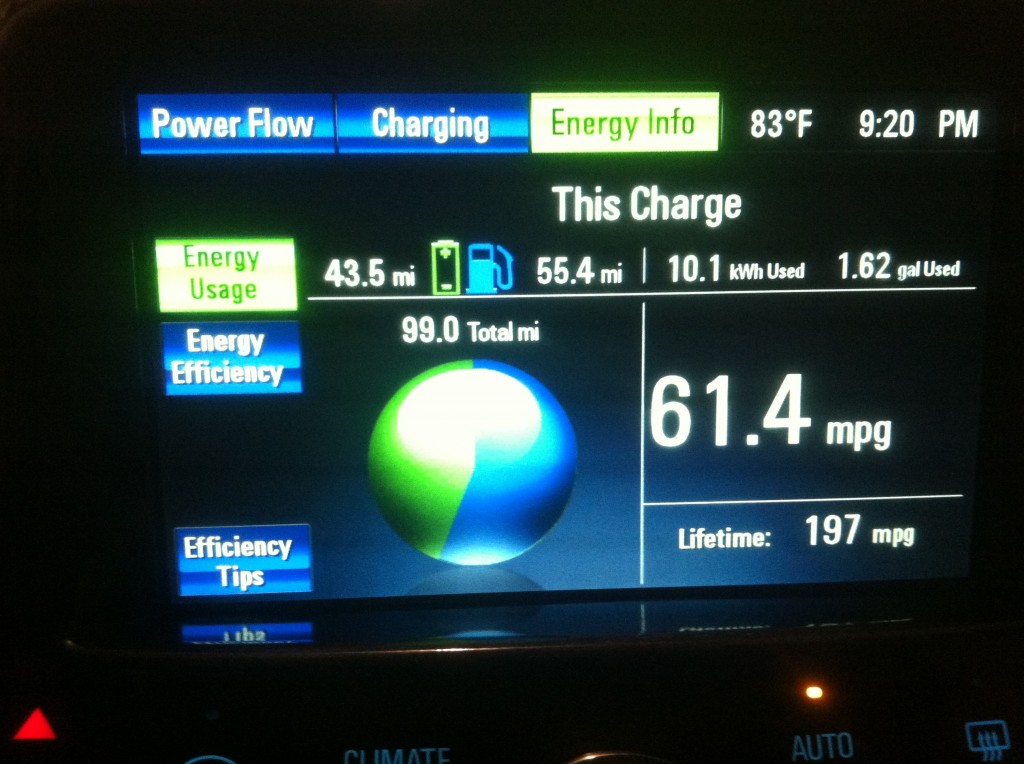Well, I have just crossed the 2,000 mile mark on the Chevy Volt so I am going to proclaim myself an expert on the subject and write a review. Let’s start out with a brief overview of what the Volt is supposed to be.
The Chevrolet Volt is a plug-in hybrid vehicle. The idea is that you charge the battery from you home electrical outlet until it is fully charged. You drive it some 35-50 miles on the battery power until the battery is depleted. At that point, a small 4 cylinder gasoline engine kicks in until you run out of gas (about 300 more miles). Of course the average driver is smart enough to stop for gas before the tank is dry. If you are interested in reading more, check out the article on Wikipedia.
Fuel Economy:
Since the Volt is hyped for its fuel economy, let’s take a look at the claims listed on the Monroney Sticker and compare it to real world performance in my neighborhood.
Fuel Economy on gasoline only: 37 MPG
Fuel Economy on electricity only: 94 MPGe or 36 kW-hrs per 100 miles
Here are two examples of how the Volt has performed in my neighborhood. The first is a typical weekend day for me which almost uses a full charge of the battery.
The first thing of interest here is that whopping 250+ MPG. Great, no? No, it’s a lie. The Volt’s computer is programmed to show 250+ MPG whenever it encounters a divide by zero in the MPG calculation. I will write more about that later.
Using the numbers above I calculate an electrical fuel economy of 150 MPGe. Wow! That’s great. Not so fast. The definition of MPGe requires “wall-to-wheel” electrical consumption. The Volt’s display only shows “battery-to-motor” consumption. Using a Killawatt, I found that the “wall-to-battery” charging efficiency is 77%. That being said, the electrical fuel economy drops to 118 MPGe. That gets us to “wall-to-battery-to-motor” electrical consumption. For grins I will just say that losses in the “motor-to-wheel” leg of the journey puts us in the neighborhood of the claimed 94 MPGe.
Now let’s look at a mix of electrical and gasoline driving. The display below is from the longest distance I have driven so far between charges.
The electrical fuel efficiency drops to 111 MPGe. All 44 of the electrical miles were freeway. Electric cars tend to have lower fuel economy on highway miles vs. city. Looking at the MPG, the Volt’s computer simply takes TOTAL miles and divides by gallons used. This simply ain’t right. Doing it correctly the gas fuel economy comes out as 34.2 MPG. On five other occasions when I have out driven the battery the gas fuel economy has ranged between 24 and 42 MPG.
Bottom Line: The Volt’s real world fuel economy comes in about as advertised.
Next I will write about the more subjective characteristics of the Volt.


